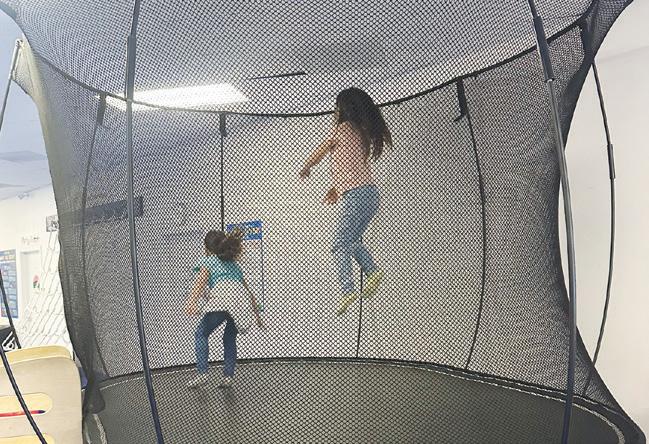












Children will soon be trading in the chimes of neighborhood ice cream trucks for the bells of school as summer vacation gives way to the start of a new academic year.
August through September is prime back-to-school season, with children all across the country stocking their backpacks and shopping for new school wardrobes.
There is more to getting ready for the start of school than making sure pencils are sharpened and tablets are charged. Parents and children can work together to ensure the transition back to the classroom is as seamless as possible.
Although summer vacation may involve trips that bring children in contact with other people, it may have been some time since they’ve spent five or more hours per day around 20 to 30 people their age. It may take a transition period to get used to being around a bunch of peers, so families can visit places where there tend to be crowds of kids, such as zoos, aquariums, parks, and trampoline centers. These can be low-pressure locations to dust off social skills.
Education is vital for young people to reach their full potential and enjoy success in adulthood. Students’ academic journeys begin as early as preschool and continue for decades. While students ultimately earn degrees or professional certifications in their own names, their academic journeys are often a team effort that includes the support of their parents.
Parental involvement in school can pay significant dividends for students. In 2019, the American Psychological Association reviewed more than 400 studies examining parental involvement in school. That review found that students whose parents were involved in their children’s schooling showed greater academic achievement, school engagement and motivation compared to youngsters with parents who were not involved. That payoff compels parents to get involved in their children’s schooling, and the following are a handful of ways to do just that.
♦ Start the year off right. Parental involvement in children’s schooling can begin

before a new school year gets under way. Orientation events designed to acclimate students to new schools can help calm youngsters’ nerves when they’re beginning kindergarten, elementary school, middle school, or high school. Transferring to a new school due to a family relocation or another variable can be difficult for students, and parents can make that transition a little easier by attending orientation events before the first day of classes. Backto-school nights held a week or two into


the school year also present a great chance for parents to start the year off right.
♦ Actively communicate with children’s teachers. Parents can contact teachers at the start of a new school year to identify the best way to communicate. Some schools utilize apps to facilitate communication with parents. Some teachers may prefer communicating via email, phone calls or even text messages. Parents should not hesitate or be afraid to reach out to teachers about their children’s needs.
♦ Do your part at home, too. Parental involvement in children’s education can extend to the home as well. Parents can emphasize the importance of education in conversations with their children and offer to help with homework when children seem to need some assistance. Parents also can ask about assignments and tests, enthusiastically engage in projects designed to involve students’ families, and provide a stable, distraction-free home environment where kids can focus on their schoolwork.
♦ Volunteer with parental organizations. Parent teacher associations/organizations are always in need of members to help to organize special events and volunteer at school functions. Parents can join groups such as a PTA or PTO to get more involved in campus life. If joining such groups is not





Children are the ultimate beneficiaries when parents get involved in their youngsters’ education, and there’s no shortage of ways for moms and dads to engage at school.
One
possible, parents can let it be known that they would like to volunteer for events throughout the school year.
♦ Ask children about their day. One of the simplest ways parents can be more involved in children’s schooling is to ask them about their day when they arrive home. Ask children what they did in class, and which parts of their day they found most, or even least, enjoyable. When parents express an interest in what kids are doing at school, that may compel kids to be more interested in their coursework.
Children are the ultimate beneficiaries when parents get involved in their youngsters’ education, and there’s no shortage of ways for moms and dads to engage at school.
- Metro Creative




Many families find the rush is on to make it to school and work on time each morning, but feeling rushed in the morning is a recipe for added stress.
Rushing through things is a poor way to begin a day, and those feelings of uneasiness can put a damper on the rest of the day ahead. Making mornings less hectic involves a few different strategies that parents and kids can easily incorporate into their daily routines.
Getting up earlier than normal, even if it’s just 15 to 20 minutes before you’re accustomed to getting out of bed, can help reduce morning stress. Resist the temptation to hit the snooze button over and over again. A few extra minutes each morning can make you feel more relaxed and provide a smooth, stress-free start to the day.
Prepare lunches the night before and have them ready in the refrigerator. In addition, lay out your clothes for the following day each night. This saves time and takes a couple more things off your morning to-do list.








Mornings
As a new school year dawns or a long vacation comes to an end, begin going to bed earlier and start waking up earlier as well. This can make the transition from carefree mornings to busy mornings go more smoothly.
Look through folders, sign paperwork, check assignments and do whatever you need to do the night before to save your family from scrambling in the morning. This

ensures those permission slips get signed and items make it back into school bags.
Look ahead on the school lunch menu and speak with children about which meals they enjoy. Let kids purchase school lunch

on those days, giving yourself a day off from lunch detail.
Smoothies, cereal bars, oatmeal and whole-grain cereals are fast and nutritious ways to start the day.
Busy families can save themselves extra work by proposing a neighborhood carpool. Sharing school drop-off detail frees time up for parents once or twice a week, and kids may enjoy traveling to school with their friends.
– Courtesy of Metro Creative







Students may be driven independently, ride the school bus, walk or bike, or carpool with others to and from school. Families can establish plans so that getting to and from school so kids don’t need to worry about it. Practice routes and timing, taking into consideration that when schools open there will be much more traffic. Parents can reassure children that there will be a learning curve, but all of the kinks generally get worked out during the first week.
Most students don’t want to think about studying, homework and testing while on summer break, but it can be
beneficial to stay current on some lessons. ‘Summer slide’ refers to the loss of some of the learning achieved during the previous school year over the summer break. Some experts say ‘summer slide’ is overstated, but it can’t hurt for students to refresh their memories on some math, science and language arts concepts over break so that they will be ready to hit the books when the new school year begins.
Children and adults can work together to map out healthful eating options for school lunch. Many school districts have lunch plans that can be purchased through an online account. Participating students simply enter a number or swipe a code at checkout. School lunches are built to be nutritionally diverse and have options that even picky eaters will like. – Metro Creative






